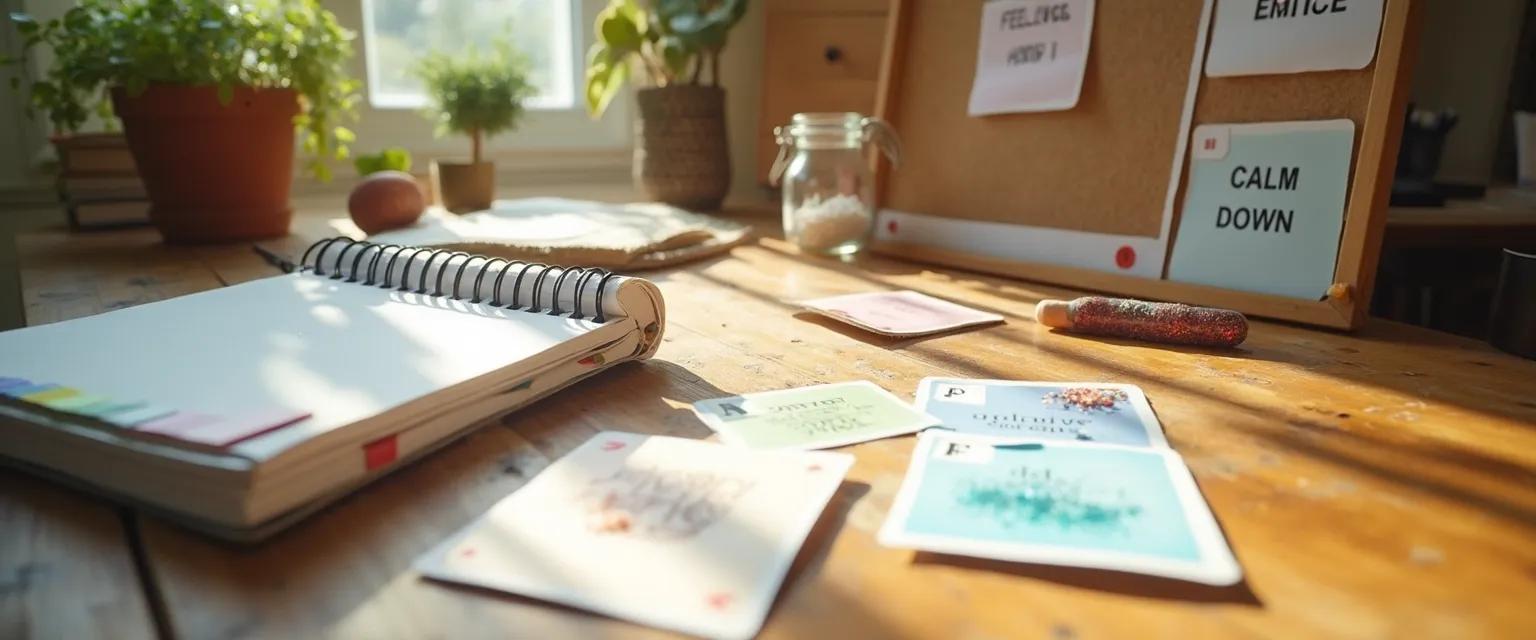7 DIY Emotional Intelligence Tools You Can Create From Household Items
Tired of expensive emotional intelligence apps and programs? You already have everything you need to boost your emotional awareness right at home! Creating your own emotional intelligence tool connects you personally to your emotional growth journey in ways digital alternatives simply can't match. The tactile experience of crafting and using DIY emotional intelligence tools engages multiple senses, making the learning process more effective and memorable.
Science confirms that hands-on activities enhance learning and retention. When you create your own emotional intelligence tool, you're more likely to use it consistently and benefit from it long-term. Plus, there's something uniquely satisfying about transforming ordinary household items into powerful tools for personal growth.
Let's explore seven creative and effective emotional intelligence tools you can make today using items you already have lying around your home. These anxiety management techniques provide practical ways to understand and regulate your emotions without breaking the bank.
3 Essential Emotional Intelligence Tools for Daily Awareness
Ready to start your DIY emotional intelligence journey? These three foundational tools help build daily emotional awareness with minimal effort:
1. Mood Tracking Jar
Transform an empty jar into a powerful emotional intelligence tool for monitoring your emotional patterns. Simply collect different colored stones, buttons, or paper clips—assign each color to a specific emotion (red for anger, blue for calm, yellow for joy). Each day, drop in an object representing your predominant mood. After a month, you'll have a visual representation of your emotional landscape that reveals patterns you might otherwise miss.
2. Emotion Cards
Create personalized emotion cards using index cards or cut cardstock. On each card, write an emotion on one side and helpful coping strategies on the reverse. For example, a "Frustration" card might list "Take three deep breaths" and "Count to ten" on the back. This emotional intelligence tool serves as an immediate resource during challenging moments and builds your emotional vocabulary. Store them in a decorative box or on a ring for easy access.
3. Portable Stress Relief Kit
Assemble a small container with sensory items that calm your nervous system: a scented sachet (lavender works well), a smooth stone to hold, a small stress ball, and a card with breathing instructions. This emotional intelligence tool provides immediate grounding during overwhelming moments. The physical act of reaching for your kit initiates the calming process before you even use the items inside.
4 Advanced DIY Emotional Intelligence Tools for Specific Situations
Once you've mastered the basics, try these specialized emotional intelligence tools for targeted emotional regulation:
1. Anger Management Box
Repurpose a shoebox into an anger processing station. Fill it with bubble wrap for popping, a notepad for writing down thoughts (which you can later tear up), and a small pillow to punch. This emotional intelligence tool provides a physical outlet for frustration in a controlled way, allowing you to process intense emotions without regrettable actions.
2. Gratitude Stone
Find a smooth stone that fits comfortably in your palm. Each morning, hold this stone while thinking of three things you're grateful for. Over time, your brain associates the physical sensation of the stone with positive emotions. This simple emotional intelligence tool serves as a portable mindfulness anchor you can carry anywhere.
3. Emotion Wheel
Create a circular chart divided into sections representing primary emotions, with subsections for more nuanced feelings. This visual emotional intelligence tool helps identify exactly what you're experiencing beyond just "good" or "bad," especially valuable for those who struggle with processing complicated emotions.
4. Comfort Sensory Bottle
Fill a clear plastic bottle with water, glitter, and a few drops of food coloring. Seal tightly and use as a visual calming aid. Shaking the bottle and watching the glitter slowly settle creates a mesmerizing effect that regulates breathing and redirects focus during emotional turbulence.
Integrating Emotional Intelligence Tools Into Your Daily Routine
The most effective emotional intelligence tool is one you actually use consistently. Place your DIY tools in strategic locations—emotion cards in your desk drawer, gratitude stone on your nightstand, or anger box in a private corner. Start with just one tool that addresses your most pressing emotional challenge.
Consider creating a simple "emotional check-in" ritual: each evening, use your mood jar or emotion wheel to reflect on the day. This brief practice builds self-awareness without feeling like a chore. Remember that these DIY emotional intelligence tools work best as part of a holistic approach to emotional wellness that includes adequate sleep, movement, and social connection.
By crafting these simple yet effective emotional intelligence tools from household items, you're taking a proactive step toward understanding and managing your emotions. The best part? You've already got everything you need to start right now.




